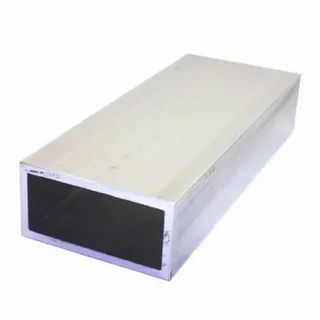In the world of construction and manufacturing, selecting the right material is crucial for ensuring the strength, durability, and overall success of a project. Two commonly used materials are the aluminium box section and aluminium tubing. While they may appear similar, they have distinct differences and applications. This article explores the key differences between aluminium box sections and aluminium tubing, highlighting their unique uses and advantages.
Understanding Aluminium Box Section
Structure and Design
An aluminium box section, also known as rectangular or square hollow section, is characterized by its rectangular or square cross-section. It features four flat sides and sharp corners, giving it a box-like appearance. This structure provides excellent rigidity and strength, making it suitable for various applications.
Strength and Stability
The flat sides of the aluminium box section provide a large surface area, which contributes to its high strength and stability. This makes it ideal for load-bearing applications where structural integrity is paramount. Its design also allows for easy welding and joining with other components, enhancing its versatility in construction projects.
Common Uses
The aluminium box section is widely used in construction, engineering, and architectural projects. Some common applications include:
- Structural Framework: Due to its strength and stability, aluminium box sections are often used in the structural framework of buildings, bridges, and other infrastructure projects.
- Architectural Features: The sleek and modern appearance of aluminium box sections makes them popular for creating facades, cladding, and other architectural elements.
- Industrial Applications: Aluminium box sections are also used in manufacturing equipment, machinery frames, and other industrial applications where durability and strength are required.
Exploring Aluminium Tubing
Structure and Design
Aluminium tubing is characterized by its circular cross-section. Unlike the box section, tubing has a continuous, smooth, and round shape. This design provides different mechanical properties and is suitable for various specific applications.
Flexibility and Versatility
The round shape of aluminium tubing offers flexibility and ease of bending, making it ideal for applications where curved or rounded structures are needed. Its versatility allows it to be used in a wide range of projects, from simple frameworks to complex engineering designs.
Common Uses
Aluminium tubing is commonly used in various industries, including:
- Automotive and Aerospace: The lightweight and flexible nature of aluminium tubing make it perfect for use in automotive frames, aerospace components, and other transportation-related applications.
- Plumbing and HVAC: Aluminium tubing is often used in plumbing and HVAC systems due to its corrosion resistance and ease of installation.
- Sports and Recreation: Aluminium tubing is used in the manufacturing of bicycles, sports equipment, and recreational structures, thanks to its combination of strength and lightness.
Key Differences Between Aluminium Box Section and Tubing
Cross-Section Shape
The most obvious difference between the aluminium box section and tubing is their cross-section shape. Box sections have a rectangular or square cross-section, while tubing has a circular cross-section. This fundamental difference affects their mechanical properties and suitability for various applications.
Strength and Load-Bearing Capacity
Aluminium box sections generally offer higher strength and load-bearing capacity due to their larger surface area and flat sides. This makes them more suitable for structural applications where stability and rigidity are crucial. On the other hand, aluminium tubing, with its round shape, provides flexibility and ease of bending, making it ideal for applications requiring curved structures.
Aesthetic and Design Considerations
The choice between aluminium box sections and tubing can also be influenced by aesthetic and design considerations. Box sections offer a sleek, modern look that is often preferred in architectural projects, while tubing provides a smooth and continuous appearance suitable for various industrial and recreational applications.
Conclusion
Both aluminium box sections and aluminium tubing have unique properties and advantages, making them suitable for different applications. The aluminium box section, with its rectangular or square cross-section, offers high strength and stability, ideal for structural and architectural projects. Aluminium tubing, with its circular cross-section, provides flexibility and versatility, making it perfect for automotive, aerospace, plumbing, and recreational uses. By understanding these key differences, architects, engineers, and builders can make informed decisions and select the right material for their specific needs.





